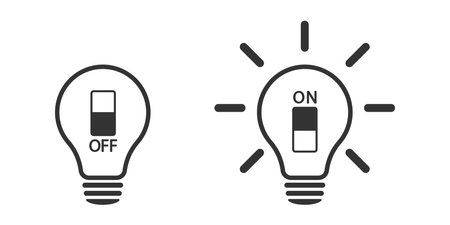Overview of UK Lighting Regulations
Lighting regulations in the United Kingdom are shaped by a robust framework of legislation and standards, designed to ensure safety, efficiency, and suitability across residential, commercial, and public spaces. At the heart of this regulatory landscape are the Building Regulations, which set out legal requirements for the design and construction of buildings, including specific provisions for lighting installations. These regulations are complemented by a suite of British Standards—most notably BS 7671 (IET Wiring Regulations) and BS EN 12464—which provide detailed technical guidance on aspects such as illumination levels, energy efficiency, and electrical safety. Together, these legislative instruments establish a comprehensive baseline for compliance, reflecting both the UKs commitment to safety and its evolving environmental objectives. For property developers, contractors, and building owners, understanding these foundational requirements is essential not only for legal compliance but also for ensuring best practice in lighting design throughout the built environment.
2. Health and Safety Considerations
Ensuring adequate lighting is a crucial health and safety obligation for property owners and employers across the UK. The regulatory framework not only addresses the technical aspects of lighting but also underlines its importance in accident prevention and the wider context of workplace safety compliance. In this section, we explore how proper lighting plays a pivotal role in minimising risks and fulfilling legal duties.
The Legal Context: Employer and Property Owner Responsibilities
Under UK law, specifically the Health and Safety at Work etc. Act 1974 and related regulations, employers and those responsible for premises must provide sufficient lighting to ensure safe access, egress, and use of workspaces. This extends to communal areas in residential buildings, commercial offices, factories, warehouses, and public spaces. Lighting systems should be designed to prevent hazards such as trips, slips, falls, and poor visibility which can lead to injuries or operational errors.
Key Areas Impacted by Lighting Standards
| Area | Health & Safety Requirement | Potential Risk if Neglected |
|---|---|---|
| Workplaces | Compliant with Workplace (Health, Safety and Welfare) Regulations 1992; adequate natural/artificial light required | Increased accidents, reduced productivity |
| Emergency Routes & Exits | Emergency lighting must illuminate escape routes (per Regulatory Reform Fire Safety Order 2005) | Panic, injury during evacuation |
| Residential Communal Areas | Sufficient lighting for stairs, corridors per Housing Health and Safety Rating System (HHSRS) | Tenant injuries, potential liability claims |
| Public Spaces | Proper street/park lighting as guided by local authority standards | Crime risk, accidents involving pedestrians/cyclists |
The Role of Lighting in Accident Prevention
Poorly lit environments have been directly linked to higher rates of workplace incidents. In industrial settings, inadequate illumination can obscure hazards such as machinery parts or spillages. In office environments, improper lighting may cause eye strain or headaches, affecting employee wellbeing and concentration. For property owners and managers, ensuring that all areas—especially stairwells, car parks, and external walkways—are well-lit is essential for reducing liability and maintaining compliance with UK safety legislation.
Compliance Checklist for Lighting Safety
- Conduct regular lighting audits throughout the premises
- Ensure emergency lighting is functional and tested periodically
- Promptly replace faulty bulbs or damaged fixtures
- Consult up-to-date British Standards (BS EN 12464-1 for workplaces) for guidance on illumination levels
- Engage qualified professionals for installation and maintenance tasks
By integrating robust lighting strategies within health and safety policies, employers and property owners not only meet regulatory requirements but also foster safer environments that protect occupants from preventable harm.

3. Energy Efficiency and Environmental Impact
Within the framework of lighting regulations in the UK, energy efficiency and environmental impact are central considerations that have undergone significant transformation over recent decades. The government has placed increasing emphasis on reducing carbon emissions and promoting sustainable development, which is reflected in a range of policies and directives influencing lighting design and installation. Notably, the Building Regulations – specifically Part L – serve as a cornerstone for these efforts. Part L mandates stringent energy performance criteria for new buildings and major refurbishments, compelling designers and installers to select lighting systems that minimise energy consumption without compromising safety or functionality.
In practical terms, this means an industry-wide shift towards LED technology, automated controls, and smart lighting solutions that reduce unnecessary usage. The Energy Performance of Buildings Directive (EPBD), transposed into UK law, further reinforces these objectives by requiring regular assessments of building energy use, including lighting systems. Compliance with these standards not only reduces environmental impact but also aligns with broader governmental initiatives such as the Clean Growth Strategy and commitments under the Climate Change Act. These policies collectively drive a culture of accountability and innovation within the lighting sector, encouraging professionals to balance regulatory compliance with cutting-edge design and ecological responsibility.
Ultimately, UK lighting regulations serve as more than just prescriptive rules; they embed a cultural shift towards sustainability at every stage – from product selection to installation and ongoing maintenance. This ensures that buildings across the country contribute positively to national energy targets while fostering environments that are both efficient and comfortable for their occupants.
4. Residential vs. Commercial Lighting Standards
When considering lighting regulations and safety standards in the UK, it is essential to recognise that requirements differ markedly between residential properties, commercial premises, and public spaces. These differences are rooted in both the intended use of the space and the specific risks or needs associated with each environment. Below, we provide an analytical comparison of key rules and guidelines, focusing on homes, offices, and shared public areas.
Key Regulatory Frameworks
Lighting in all property types must comply with overarching legislation such as the Building Regulations (specifically Part L for energy efficiency), as well as British Standards like BS 7671 for electrical installations. However, each sector applies these principles differently:
| Property Type | Relevant Regulations | Main Focus |
|---|---|---|
| Residential | Building Regulations Part L, BS 7671 Housing Health and Safety Rating System (HHSRS) |
Energy efficiency, occupant safety, suitable light levels for daily living |
| Commercial (Offices) | Building Regulations Part L, BS EN 12464-1 Health and Safety at Work Act 1974 |
Task-specific lighting, minimising glare, emergency lighting provision |
| Public Spaces | BS EN 13201 (Road Lighting), Equality Act 2010 Local Authority Guidelines |
Accessibility, safety for large groups, vandal-resistance, emergency evacuation lighting |
Detailed Comparison of Requirements
Residential Lighting
In UK homes, regulations prioritise energy efficiency—such as mandatory use of low-energy fittings—and safe electrical installation. There is also a focus on providing adequate natural light and ensuring artificial lighting is sufficient for general living activities without causing discomfort or health issues.
Commercial and Office Lighting
Office environments require more nuanced lighting design. Employers must ensure workspaces are adequately illuminated to reduce eye strain and enhance productivity; this often involves higher lux levels than domestic settings. Emergency lighting systems are obligatory to facilitate safe evacuation during power failures. Additionally, adjustable and task-specific lighting is encouraged to accommodate diverse work activities.
Lighting in Public Spaces
Lighting in public areas such as streets or communal buildings is governed by strict standards to guarantee public safety and accessibility. Factors such as uniformity of illumination, avoidance of dark spots, and integration with CCTV systems are taken into account. The Equality Act ensures that lighting does not disadvantage people with disabilities.
Cultural Context: Everyday Expectations and Compliance
The UKs approach reflects a cultural emphasis on wellbeing, inclusivity, and sustainability within the built environment. While compliance is mandatory across all property types, there is also a strong expectation from residents and users that spaces will be designed with comfort and safety at their core—whether it’s a cosy flat in Birmingham or a bustling London office block.
5. Certification, Inspections, and Enforcement
Ensuring compliance with lighting regulations and safety standards in the UK is a multi-layered process involving certification schemes, regular inspections, and robust enforcement mechanisms. The journey begins with reputable certification bodies such as NICEIC (National Inspection Council for Electrical Installation Contracting), which set out rigorous assessment criteria for electrical contractors. These schemes certify that practitioners are competent to carry out lighting installations according to British Standards and legal requirements.
Certification Schemes: Guaranteeing Competence
CERTIFICATION plays a pivotal role in raising the bar for safety and professionalism. Schemes like NICEIC, ELECSA, and NAPIT require electricians to demonstrate up-to-date knowledge of the IET Wiring Regulations (BS 7671) and Building Regulations (notably Part P for domestic installations). Certification is not just a badge; it signals that a contractor’s work will be regularly assessed for compliance, offering peace of mind to homeowners and businesses alike.
Regular Inspections: Maintaining High Standards
Inspections are an essential part of maintaining ongoing compliance. For new builds or significant refurbishments, local authorities may conduct site visits before issuing completion certificates. For existing premises, periodic electrical inspection reports—commonly referred to as EICRs (Electrical Installation Condition Reports)—are recommended every five years in commercial settings or upon change of tenancy in residential properties. These inspections ensure that lighting systems remain safe, energy-efficient, and fit for purpose throughout their lifecycle.
The Role of Local Authorities in Enforcement
Local authorities act as gatekeepers when it comes to enforcing lighting regulations. Their responsibilities include reviewing installation plans, inspecting completed works, and investigating complaints about unsafe or non-compliant lighting. In cases where breaches occur, authorities have the power to issue improvement notices, enforce remedial action, or even prosecute offenders under the Building Act 1984 or Health and Safety at Work Act 1974. This layered enforcement ensures that public safety and environmental targets are not compromised by substandard lighting practices.
6. Recent Trends and Future Developments
The landscape of lighting regulations and safety standards in the UK is experiencing a period of dynamic evolution, shaped by both technological advancements and significant geopolitical changes. One of the most notable trends is the increasing integration of smart lighting systems, which leverage IoT connectivity and automation to enhance energy efficiency, user control, and security. These innovations are prompting updates to existing standards to address new concerns around data privacy, electromagnetic compatibility, and long-term sustainability.
Following Brexit, the regulatory framework for lighting products has diverged from EU norms in several key respects. The introduction of the UKCA (UK Conformity Assessed) marking now sits alongside the familiar CE mark, creating a dual compliance environment for manufacturers and importers. This shift has had tangible impacts on the importation of lighting products, as businesses navigate differing requirements for product testing, documentation, and market surveillance between Great Britain and Northern Ireland.
Furthermore, there is an increased emphasis on harmonising safety with ambitious environmental targets. The UK government continues to update Minimum Energy Performance Standards (MEPS), phasing out inefficient technologies and encouraging adoption of LEDs and other low-carbon solutions. These moves are underpinned by broader sustainability strategies such as the Ten Point Plan for a Green Industrial Revolution, which places efficient lighting at the heart of urban renewal and net-zero ambitions.
Looking ahead, industry stakeholders anticipate ongoing refinement of standards to keep pace with rapid innovation. Issues such as the recyclability of components, circular economy principles, and lifecycle assessments are likely to gain prominence in future revisions. Collaboration between regulators, manufacturers, and trade bodies remains essential to ensure that lighting solutions not only comply with legal requirements but also meet evolving consumer expectations for quality, safety, and environmental stewardship.


